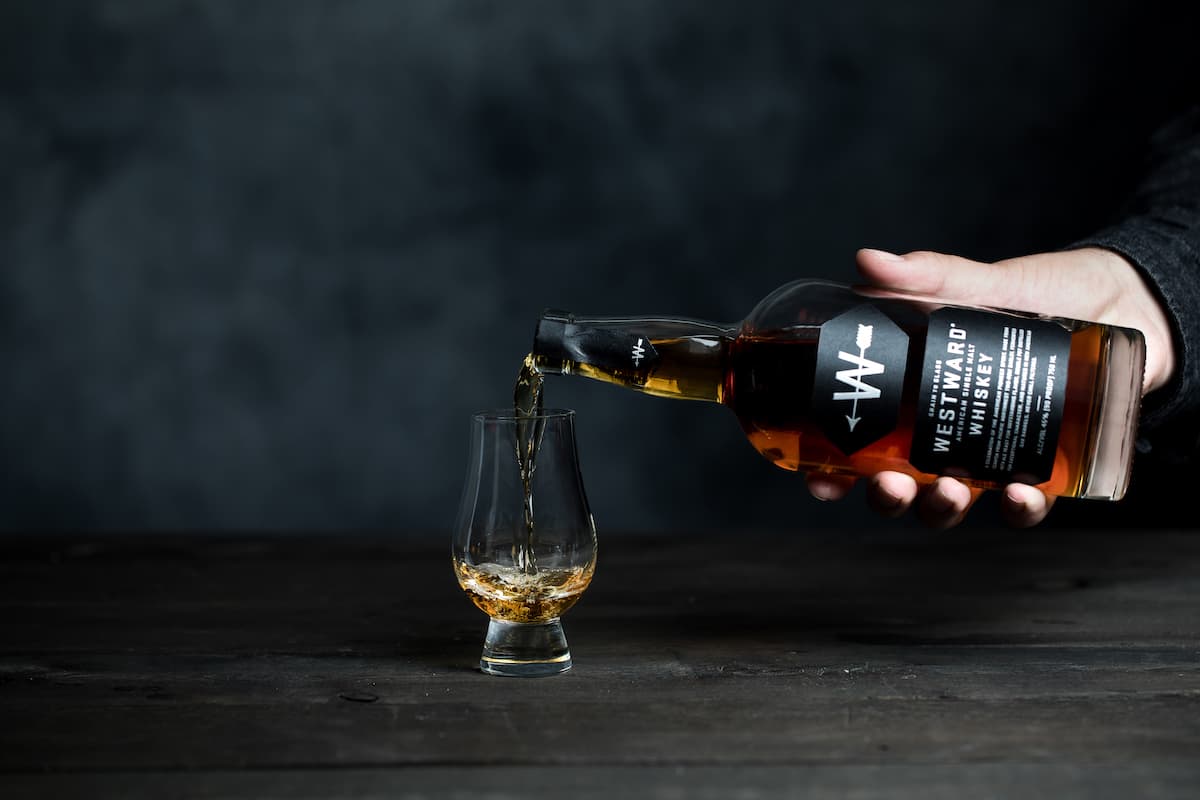Before you can make whiskey, you’ve got to make beer. In the case of Portland, Oregon’s Westward Whiskey, this truism works on two levels. The first is plain science: Whiskey-making requires grains to be fermented into what distillers call “wash,” but any brewer would simply recognize as beer, before distillation. The second is biographical. Westward’s founder, Christian Krogstad, first moved to Portland in 1991 with the express purpose of making beer.
“I wanted to be a brewer, that was my calling,” Krogstad says. “So I came to Portland to take my vows.”
Krogstad got into the business at the ground floor, back when the Rose City numbered just over a dozen breweries, and eventually attended brewing school in Chicago. His final job in brewing turned him onto whiskey-making, after the brewery owners purchased a still to turn Krogstad’s washes into whiskey.
“I got to see what was involved in whiskey making and thought, I can do that,” he recalls.
From Beer to Whiskey
But Krogstad also knew what he didn’t want to do—simply recreate scotch in the Pacific Northwest. He had taken a lesson from the original wave of American craft breweries in the early 1980s, which modeled their product on classic European beer recipes.
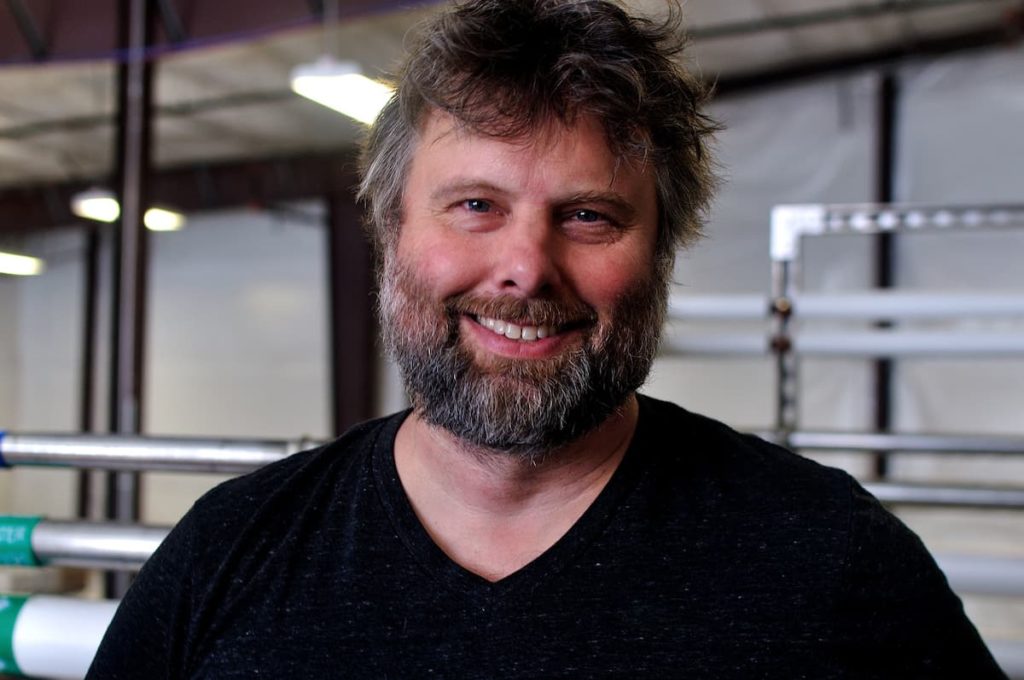
“It’s a great way to learn how to brew, but it’s not a winning proposition, either,” he says. “Because you’re never going to be the original… You have to ask, what can I bring to it that would be newsworthy or that would get people’s attention? It had to be innovation, it had to be creating something new in whiskey.”
For Westward, that “new” factor would be a focus on making the best beer possible for its wash and allowing that character to carry over to the whiskey itself.
“Coming from the beer background, I really kept that philosophy… the first part of our facility looks just like a microbrewery. In fact, we could bottle the beer that we make, and people would love it,” he says.
The Malt
Fittingly, Westward puts a premium on its raw ingredients. It exclusively uses two-row barley grown in Washington, Oregon, and Idaho, which head distiller Miles Munroe refers to as “the building block of craft beer.”
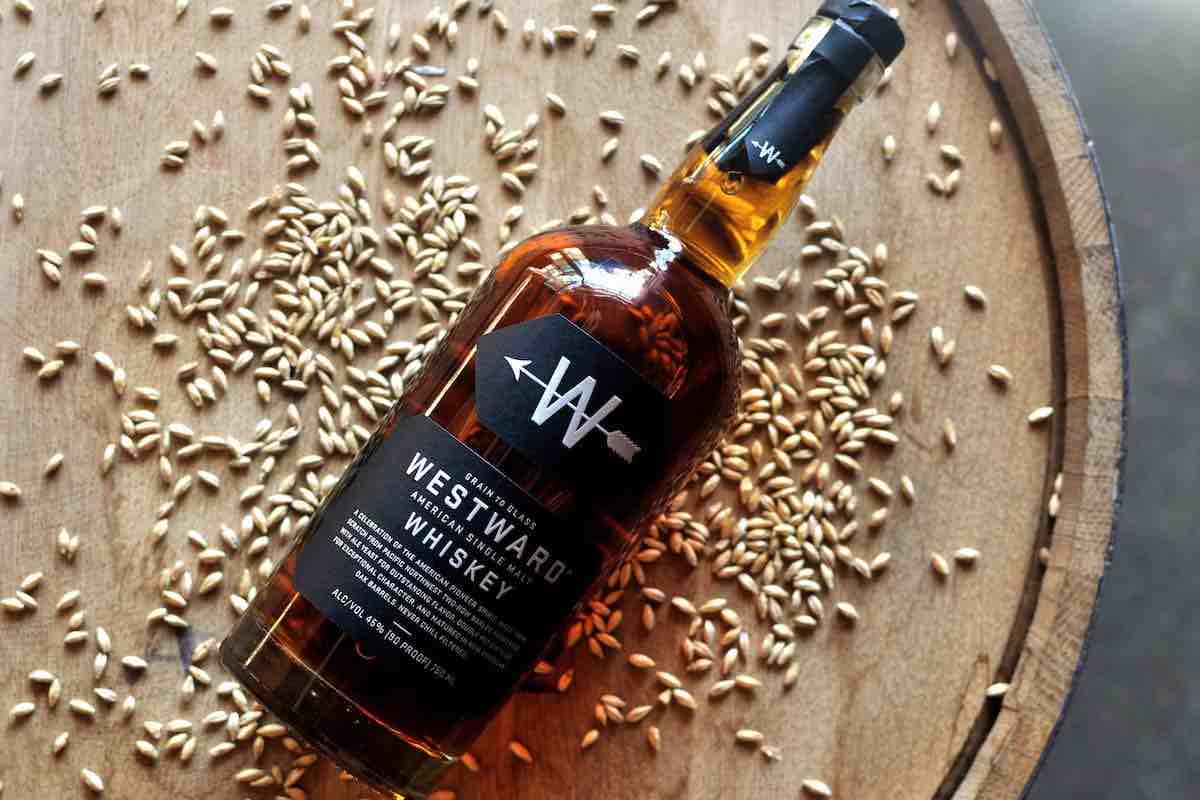
“We’re deliberate in why we chose a high-color, two-row brewer’s base malt,” Munroe says. “It’s a very expensive raw material to work with, but we think it makes excellent whiskey.”
From the milling process onward, the ingredients are treated gently to ensure that their character will be present in the finished whiskey.
“Christian introduced this term; he would often liken our approach to distilling whiskey as ‘minimalist cooking’ where you’re taking excellent ingredients to begin with and not manipulating them too much, treating them very kindly,” says Munroe. And then in the end you have this product that speaks of its origins, speaks of its raw materials.”
The Yeast
Another divergence point for Westward is its choice of yeast. Many distillers rely on M strain yeast, also known as a “distiller’s yeast,” to ferment their grain into wash. M strains are favored because they can more aggressively convert sugar into alcohol, making for a more efficient product. Instead, Westward relies chiefly on more flavorful yet less efficient ale yeast strains, in particular the Sierra Nevada ale yeast ubiquitous to American craft brewers.
“Even though they’re less efficient, they produce these great, fruity ester qualities that you get from an ale,” Krogstad says.
Westward’s ginger treatment of the product carries over to fermentation. The distiller is careful to avoid over-stressing the yeast, as doing so would produce ethyl acetate, the chemical compound most readily identified with nail polish remover. While ethyl acetate can be removed, it comes at the cost of flavor down the line.
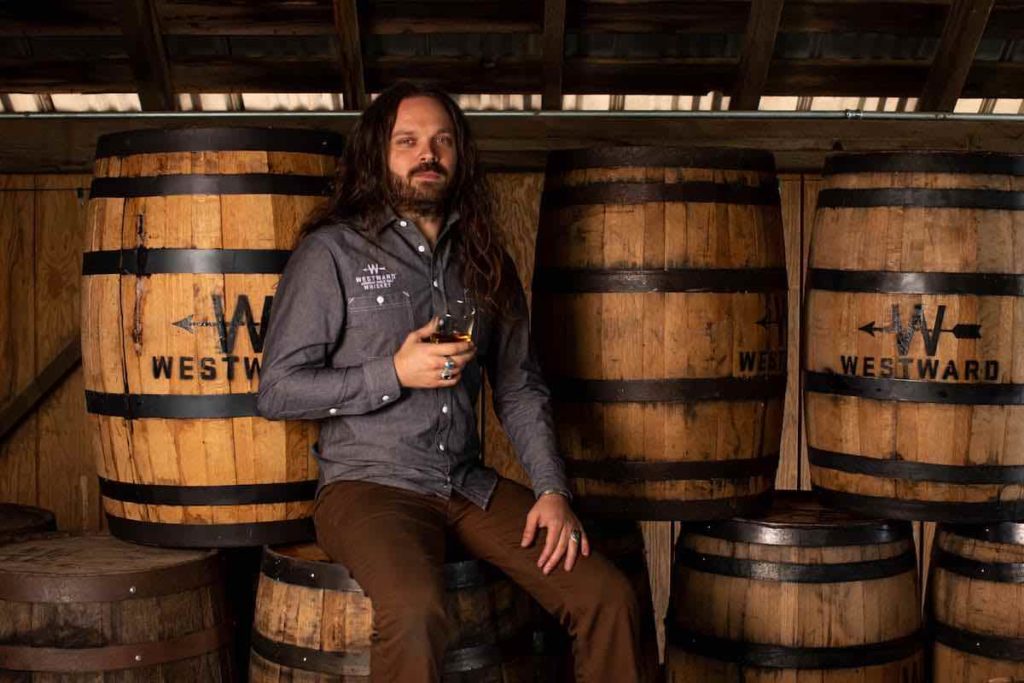
“[Ethyl acetate] is hard to get rid of, and there are really two ways of getting rid of it,” says Krogstad. “Either a long maturation in oak, or a long reflux in your stills. Both of those tend to be a blunt instrument. They get rid of the off-flavors, but they get rid of the good flavors, too. They just get rid of flavors.”
While many American distillers ferment at a high temperature to complete the process in 24 to 36 hours, Westward ferments at a low temperature that turns it into a four- or five-day affair. According to Munroe, high-temp fermentations result in nail polish remover, rubber tire, and paint thinner notes, which would have to be removed later at the expense of desirable flavors.
Westward’s careful approach may preserve flavor, but it comes at a price.
“If we were going to use a distiller’s yeast… we could get double, maybe even triple the amount of alcohol out of our fermentations,” Munroe says. “But because we’re using an ale yeast at a low temp, one of these 11,000-gallon fermenters will give us just five barrels of Westward.”
Ultimately, it’s a trade-off they’re willing to make.
“What is coming out of our fermenters is what’s really going to express most of the character in that finished product,” says Munroe.
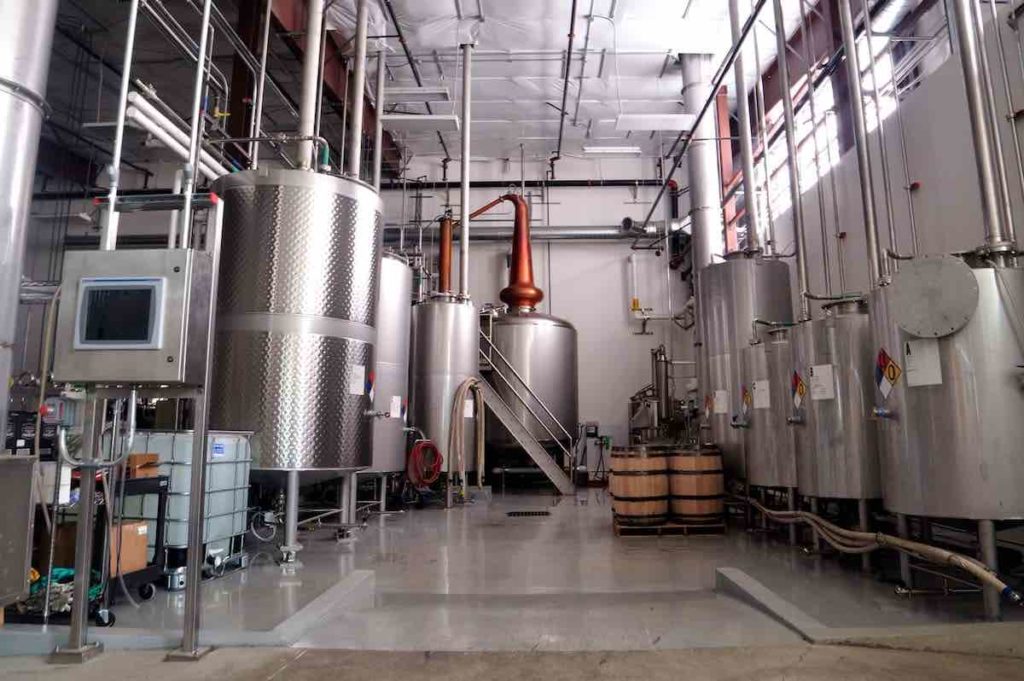
Distillation and Beyond
Throughout the distillation process, Westward’s mission is to preserve that flavor rather than rectify it out of existence. To achieve that goal, they had a custom still made for them by Louisville’s Vendome that features a squatter column that results in less flavor-stripping reflux. It also has a lower bell onion and a shorter connecting pipe to reduce the amount of copper contact, which would “clean-up” the spirit by removing sulfur compounds.
“What’s already in here is really delicious, you kind of just want to polish it a little bit.” Munroe says.
The new-make spirit comes out at around 140 proof and is proofed down to about 124.5 before entering new, char-two oak barrels for three to four years. What comes out—Westward American Single Malt—is something recognizable as whiskey, yet completely different from what many drinkers have experienced before. It’s robust and malty, with a heavy mouthfeel and even a touch of earthy funk. It seems hard to describe at first, but Munroe has the perfect turn of phrase.
“For us, it’s barley eau de vie,” he says.
“Cultural Terroir”
Much of the Westward story seems centered on preserving flavor, rather than imparting it. Which isn’t to say that the distiller is dead set-against barrel finishes. But rather than imitating Scotland, Westland has again looked to its own backyard.
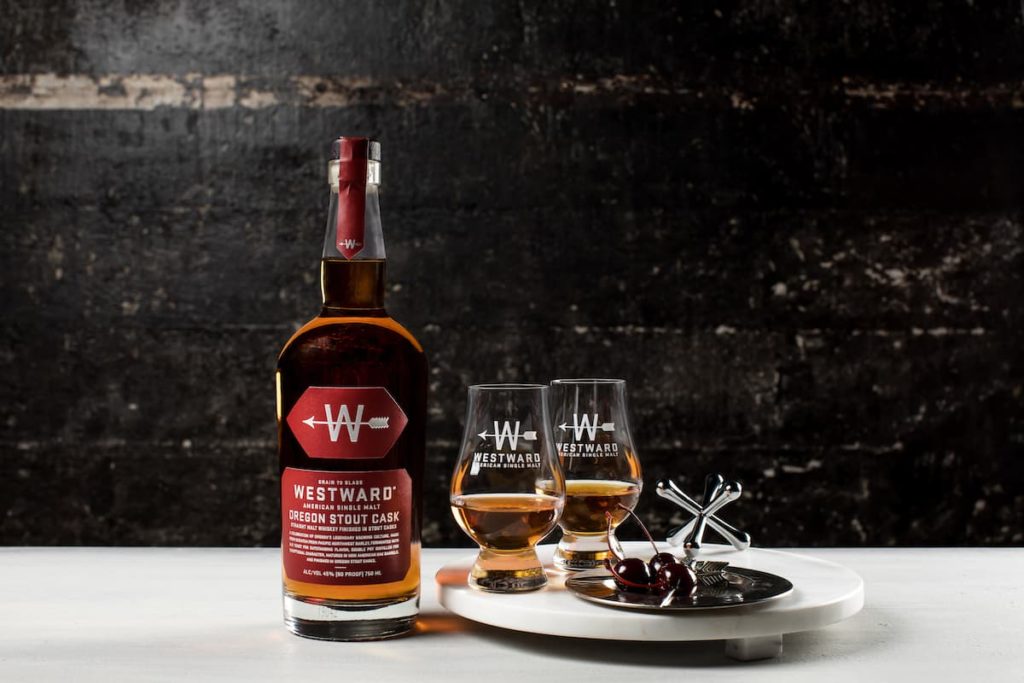
The end result was Westward Oregon Stout Cask, made by finishing fully matured Westward American Single Malt for a further year in American oak casks that had previously been used by a variety of Oregon brewers to hold stout.
“Why ship in barrels from Jerez or Porto for finishes, when we’ve got great industries right here in Portland? You can call it terroir, but it’s more the cultural terroir,” Krogstad says.
“Cultural terror” may sound like an abstraction, but it’s hard to imagine that Westward could have been made anywhere other than the cradle of America’s craft-brewing renaissance.
